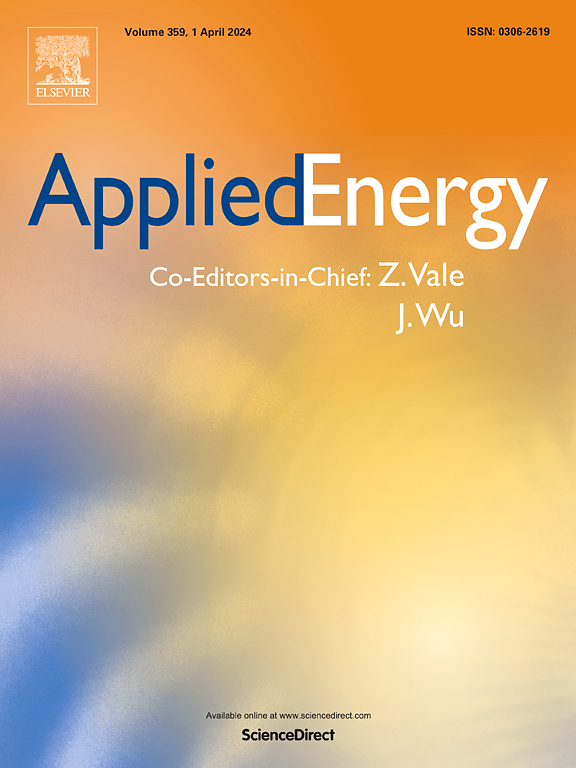Recent advances in pyrolysis upcycling of waste plastics into hydrocarbon fuels on biochar-based catalysts
IF 11
1区 工程技术
Q1 ENERGY & FUELS
引用次数: 0
Abstract
Waste plastics, positioned between biomass and fossil fuels, hold great potential for valorization through upcycling technologies. However, it is still challenging to produce high-quality energy and chemicals from real-word commingling waste plastics. Catalytic pyrolysis demonstrates strong adaptability to mixed feedstocks, and the development of specialized catalysts is key to enhancing product quality. Among various catalysts, biochar-based catalysts stand out for their simple preparation and remarkable resistance to coke deposition. In this context, the catalytic pyrolysis of waste plastics based on biochar-based catalysts was comprehensively and statistically analyzed by considering plastics feedstocks, pyrolysis reactors, reaction conditions, and catalyst development. This paper critically examines the mechanisms governing catalytic reaction during pyrolysis and analyzes the current challenges aimed at improving the yield and selectivity in the production of target products. In comparison to in-situ, the oil yield from ex-situ and microwave catalytic pyrolysis is notably higher. The coconut shell-based biochar with polymetallic modification under higher catalyst-to-feedstock ratios and lower reaction temperatures are more conducive to producing liquid oils. The free radical generation, carbocation reactions, and hydrogen transfer are the main mechanisms of waste plastics pyrolysis catalyzed by biochar-based catalysts. The Bronsted and Lewis acid centers on biochar-based catalysts, enhanced by biochar design, metal modification, and microwave heating, are key to determining the above reactions. Nonetheless, more efforts should be taken to design outstanding biochar-based catalysts and conversion systems by considering the environmental impacts and economic feasibility from intelligent and life-cycle aspects for scaling up to promote the sustainability and socio-economic benefits.
基于生物炭催化剂的废塑料热解升级循环制烃燃料研究进展
废塑料位于生物质能和化石燃料之间,通过升级回收技术具有巨大的增值潜力。然而,从真实的废塑料混合中生产高质量的能源和化学品仍然具有挑战性。催化热解对混合原料适应性强,开发专用催化剂是提高产品质量的关键。在各种催化剂中,生物炭基催化剂以其制备简单、抗积炭性能优异而著称。在此背景下,从塑料原料、热解反应器、反应条件、催化剂发展等方面对基于生物炭基催化剂的废塑料催化热解进行了综合统计分析。本文批判性地考察了热解过程中催化反应的控制机制,并分析了当前面临的挑战,旨在提高目标产品的收率和选择性。与原位热解相比,非原位热解和微波催化热解的油收率明显更高。采用多金属改性的椰壳生物炭在较高的催化进料比和较低的反应温度下更有利于制备液体油。自由基生成、碳正离子反应和氢转移是生物炭基催化剂催化废塑料热解的主要机理。Bronsted和Lewis酸以生物炭为基础的催化剂为中心,通过生物炭设计、金属改性和微波加热来增强,是确定上述反应的关键。尽管如此,从智能和生命周期方面考虑环境影响和经济可行性,设计优秀的生物炭基催化剂和转化系统,以扩大规模,促进可持续性和社会经济效益。
本文章由计算机程序翻译,如有差异,请以英文原文为准。
求助全文
约1分钟内获得全文
求助全文
来源期刊

Applied Energy
工程技术-工程:化工
CiteScore
21.20
自引率
10.70%
发文量
1830
审稿时长
41 days
期刊介绍:
Applied Energy serves as a platform for sharing innovations, research, development, and demonstrations in energy conversion, conservation, and sustainable energy systems. The journal covers topics such as optimal energy resource use, environmental pollutant mitigation, and energy process analysis. It welcomes original papers, review articles, technical notes, and letters to the editor. Authors are encouraged to submit manuscripts that bridge the gap between research, development, and implementation. The journal addresses a wide spectrum of topics, including fossil and renewable energy technologies, energy economics, and environmental impacts. Applied Energy also explores modeling and forecasting, conservation strategies, and the social and economic implications of energy policies, including climate change mitigation. It is complemented by the open-access journal Advances in Applied Energy.
 求助内容:
求助内容: 应助结果提醒方式:
应助结果提醒方式:


